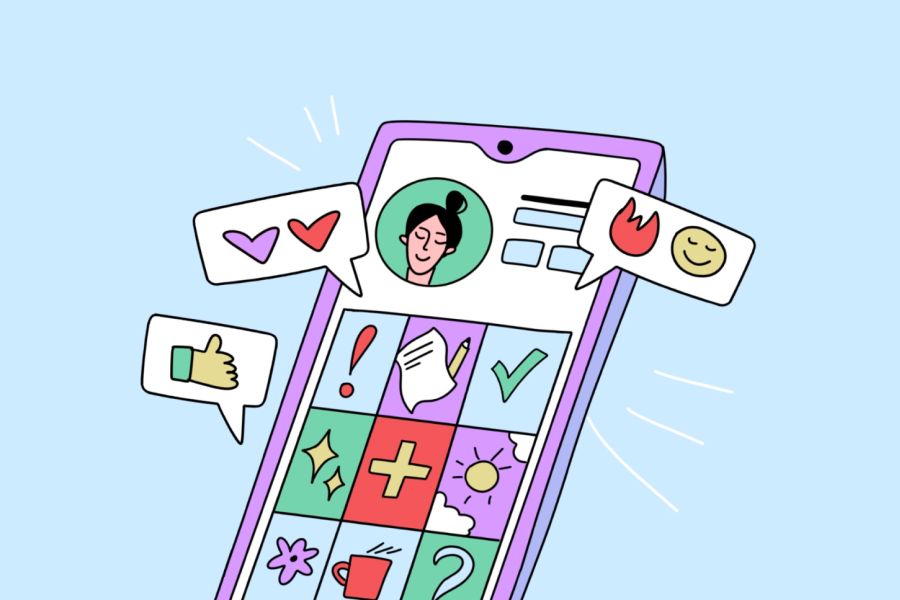Student Freelancing: Best Freelance Jobs for Students + How to Get Started
You don’t need to be an expert to start freelancing as a student. Learn everything you need to know about getting your first client.
February 17, 2025
February 19, 2025

Are you looking to start freelancing as a student? Taking gigs while studying is a great way to make some cash on the side. Even more importantly, it can prepare you for future career paths and opportunities. The demand for freelance services will only keep growing. According to Statista, there will be 90.1 million freelancers in the U.S. alone by 2028.
Today’s expert Essea Fayangcao, a Marketing Strategist & Operations Manager, has shared her hands-on experience building a successful freelancing career. She once started her journey as a student and has turned freelancing into a business. Together with Essea, let’s find out what roles you can try with little to no previous experience, how to build a portfolio and find clients, what jobs are most sought-after in 2025, and how much to charge for your services.
Freelancing for students: easiest jobs to try
Many freelance jobs are beginner-friendly and can be done from the comfort of your own dorm. According to Essea, these are the easiest jobs students can take on without much previous experience:

Many of those, including virtual assistance, data entry, graphic design, social media marketing, and others have been listed as the most demanded skills in 2025. While these are not the highest paying jobs on the market, they are great for students in early stages of their careers.

It gets increasingly harder to find a job right after studying and graduating, since most employers prefer candidates with relevant work experience. If you’re currently looking for gigs that can turn into future-proof full-time occupations, the report above can be a good starting point. Building your career in these areas can be a practical way to stand out from the rest of recent graduates.
Identifying which freelance jobs are the right fit
So, you’re studying and don’t have any solid skills yet. How do you know which freelance jobs you can do? Many students doubt themselves and overthink trying to find their perfect career path. The truth is, you don’t have to be an expert to start freelancing. In fact, there are even jobs where you do nothing at all, but that’s a discussion for another time.
You don’t need to be an expert to start freelancing. I wasn’t. You just need to be a few steps ahead of the person you’re helping. When I started, I didn’t know everything, but I used what I did know to help others. If you have a skill — whether it’s writing, designing, or organizing — you can start offering your services right now. Don’t overthink it, just begin.
{{Essea Fayangcao}}
Instead of asking yourself what your dream job is, reflect on these: 1) what am I good at? and 2) what skills do I want to learn and master? To identify freelance jobs you can potentially do, you can think of the times someone asked you for help or look at the hobbies you have. You can also ask your friends and family to share what they think you’re good at — sometimes, all it takes is an outside perspective.
Say your classmates ask you to check their essays and give comments — that’s editing and proofreading skills right there. If you’re good at organizing your time while studying, that’s a skill, too, which is highly important for a virtual assistant, for example. Perhaps, you have a creative hobby like drawing? Try design creation then.

If you still don’t know what freelance jobs you should do, simply look at your major. Crazy, I know. Go to Prospects or similar websites to see what jobs you can do based on your degree — you’d be surprised at the number of options you have.

Set realistic goals and don’t rush into trying everything all at once. Research several options that look appealing to you. Remember, you’ll need to invest time and effort into learning the necessary skills, so make sure you don’t spread yourself too thin.
Creating a portfolio from scratch
Your CV and portfolio should tell a story: “Here’s what I can do, here’s proof, and here’s how I can help you.” When I first started, I didn’t have a fancy resume or tons of experience. So, I built my portfolio from scratch — personal projects, small gigs, and things I was already doing for myself. If you don’t have experience yet, create mock projects, help a friend, or work on something you’re passionate about. That’s how I built mine, and it worked.
{{Essea Fayangcao}}
To get experience, you need a job; to get a job, you need experience — this is what they call the experience dilemma. It is true that you need a portfolio that proves your abilities, even for freelance projects.

So, what steps can you take to resolve the experience dilemma?
- Create mock projects. For instance, if you want to try copywriting, search for copywriting project ideas — here’s a list of 80 project ideas by the American Writers & Artists Institute. Another way of approaching this is by going directly to job boards and looking for job postings.
By having different mock projects on your portfolio, you can showcase your versatility as a content creator. Besides, you’ll be able to identify what industries and topics you’re most interested in.
- Get certifications. There are many online certification platforms, including Coursera, HubSpot Academy, Udacity, Udemy, etc., with a lot of free options available.

Although some believe hirers overlook certifications on a CV, as a freelancing student with little experience, you can list your certificates to add more credibility and back up your portfolio.
- Offer free or low-cost freelance work at first. It could be a project for a friend, school club, or local business in exchange for a testimonial. That’s also a great way to spread the word about your skills and start building your network. Word of mouth is still one of the best marketing channels, after all.
Suppose you now know what you want to do and have your portfolio ready. How do you find your first clients?
Finding clients as a freelancer
Finding your first client is where it gets trickier, but not impossible! Here’s what you can do:
- You can try platforms like Upwork, Fiverr, Freelancer, Toptal, PeoplePerHour, etc. There are also specialized freelancing marketplaces like Dribble for designers or Belay for virtual assistants. The biggest drawback is that these platforms are highly competitive.
- Another way to approach client search is through posting online. Try sharing valuable content or behind-the-scenes of your work.
I didn’t plan on becoming a freelancer — it just happened. I loved writing and had a blog where I talked about self-growth and Christian life. One day, a reader reached out and asked if I could help with content for their business. That became my first freelance gig. I realized that the skills I was using for fun could actually make me money. Sometimes, your first opportunity is already in front of you — you just need to say yes to it.
{{Essea Fayangcao}}
- Online communities on Facebook, LinkedIn, Reddit, and Discord also often have job opportunities. I’ve covered this in my other article — check Facebook groups and networking section. No matter what platform or social media you choose, the search algorithm is pretty much the same.
- Don’t skip networking in real life. Contact local businesses — perhaps, your local convenience store needs a new logo? Also, remember, one of the main perks of higher education is networking opportunities. Attend university events like career workshops and job fairs because you never know what opportunities you might come across or who you’re going to meet there.

Once you’ve had several happy clients, you can offer them a referral discount. Don’t be afraid to directly ask them to recommend your services where appropriate.
How much you should charge
Essea suggests a three-step approach to pricing your services:
- See what others are charging on big platforms mentioned above.
- Start with an “experience-building,” below-market rates.
- Once you have a few finished projects and good reviews, increase your rates. It can be a gradual process, for example, from $5 to $7 at a time.
Figuring out what to charge can be confusing, so I started with a simple approach. If you want to earn $150–$250 per month and can work 10 hours per week, here’s an easy breakdown:
$150 ÷ (10 hours x 4 weeks) = $3 per hour (low starting rate)
$250 ÷ (10 hours x 4 weeks) = $5 per hour (higher starting rate)
That’s exactly how much I started at first. I charged lower rates in the beginning to gain experience, build my portfolio, and get client feedback. Once I felt more confident and had proof of my work, I started increasing my rates. Start small, gain experience, and grow from there — it works.
{{Essea Fayangcao}}
Don’t be afraid to make mistakes or not know something when you start your freelancing journey. You’ll have to spend time working on your portfolio. Finding your first client will take a lot of searching online, networking through workshops and other offline events, and just putting yourself out there. You’ll need to learn how to promote your services well. Your first gig won’t be perfect. But that’s the part of the process that will lead you to great results — you’ve got this!
FAQ
We are here to ease your working routine
Whether you're freelancing or a full-time contractor, we simplify the working process, putting you in control.
Try it free


A practical guide to raising your rates and communicating the change clearly, professionally, and without unnecessary stress.

Check our guide about the best side hustles with a list of 15 second jobs at night from home for you to make more money every month.

Get tips and advice on how to build a strategy for your solopreneur social media.

